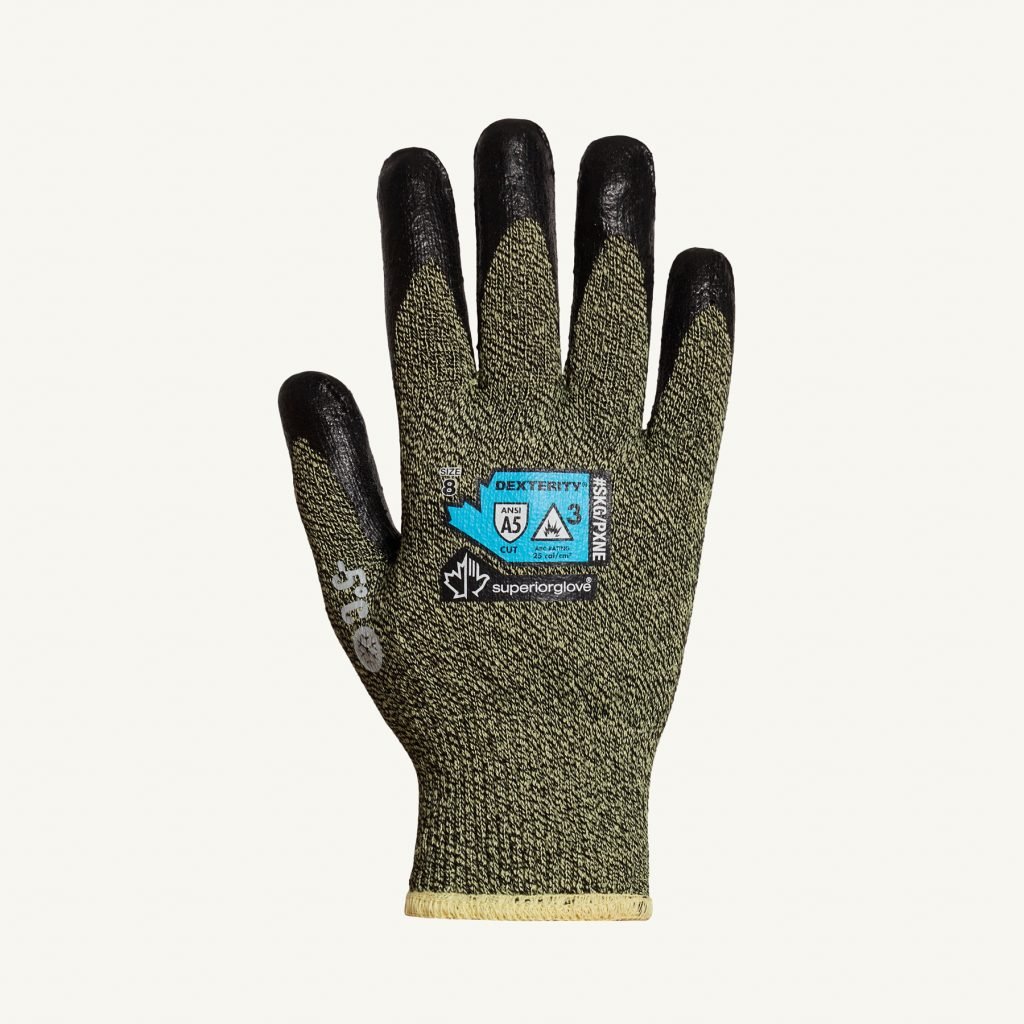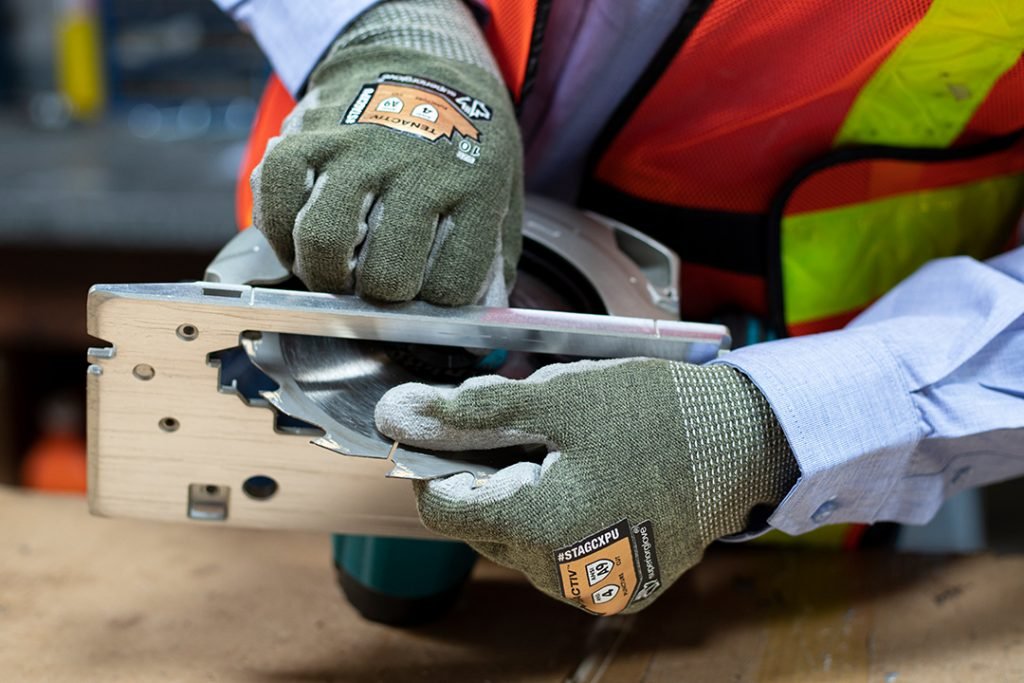How to choose the best hand protection for the job.
If a workplace hazard assessment reveals that employees face potential injury to hands and arms that cannot be eliminated through engineering and work practice controls, employers must ensure that employees wear appropriate protection. Potential hazards include skin absorption of harmful substances, chemical or thermal burns, electrical dangers, bruises, abrasions, cuts, punctures, fractures and amputations. Protective equipment includes gloves, finger guards and arm coverings or elbow length gloves.
Employers should explore all possible engineering and work practice controls to eliminate hazards and use PPE to provide additional protection against hazards that cannot be completely eliminated through other means. For example, machine guards may eliminate a hazard. Installing a barrier to prevent employees from placing their hands at the point of contact between a table saw blade and the item being cut is another method.
Types of Protective Gloves
There are many types of gloves available today to protect against a wide variety of hazards. The nature of the hazard and the operation involved will affect the selection of gloves.
The variety of potential occupational hand injuries makes selecting the right pair of gloves challenging. It is essential that employees use gloves specifically designed for the hazards and tasks found in their workplace because gloves designed for one function may not protect against a different function even though they may appear to be an appropriate protective device.

The following are examples of some factors that may influence the selection of protective gloves for a workplace.
- Type of chemicals handled.
- Nature of contact (total immersion, splash, etc.).
- Duration of contact.
- Area requiring protection (hand only, forearm, arm).
- Grip requirements (dry, wet, oily).
- Thermal protection.
- Size and comfort.
- Abrasion/resistance requirements.
Gloves made from a wide variety of materials are designed for many types of workplace hazards. In general, gloves fall into four groups:
- Gloves made of leather, canvas or metal mesh;
- Fabric and coated fabric gloves;
- Chemical and liquid resistant gloves;
- Insulating rubber gloves.

Leather, Canvas or Metal Mesh Gloves
Sturdy gloves made from metal mesh, leather or canvas provide protection against cuts and burns. Leather or canvass gloves also protect against sustained heat.
Leather gloves protect against sparks, moderate heat, blows, chips and rough objects.
- Aluminized gloves provide reflective and insulating protection against heat and require an insert made of synthetic materials to protect against heat and cold.
- Aramid fiber gloves protect against heat and cold, are cut and abrasive resistant and wear well.
- Synthetic gloves of various materials offer protection against heat and cold, are cut and abrasive resistant and may withstand some diluted acids. These materials do not stand up against alkalis and solvents.
Reference Guide
We offer Superior Gloves, and for a handy selection guide please check their website at SUPERIOR GLOVES
Check out which gloves fit your need and you can get them HERE and if you don't see them, please LET US KNOW. We can usually get exactly what you need within a week.
Thank you for Looking!



